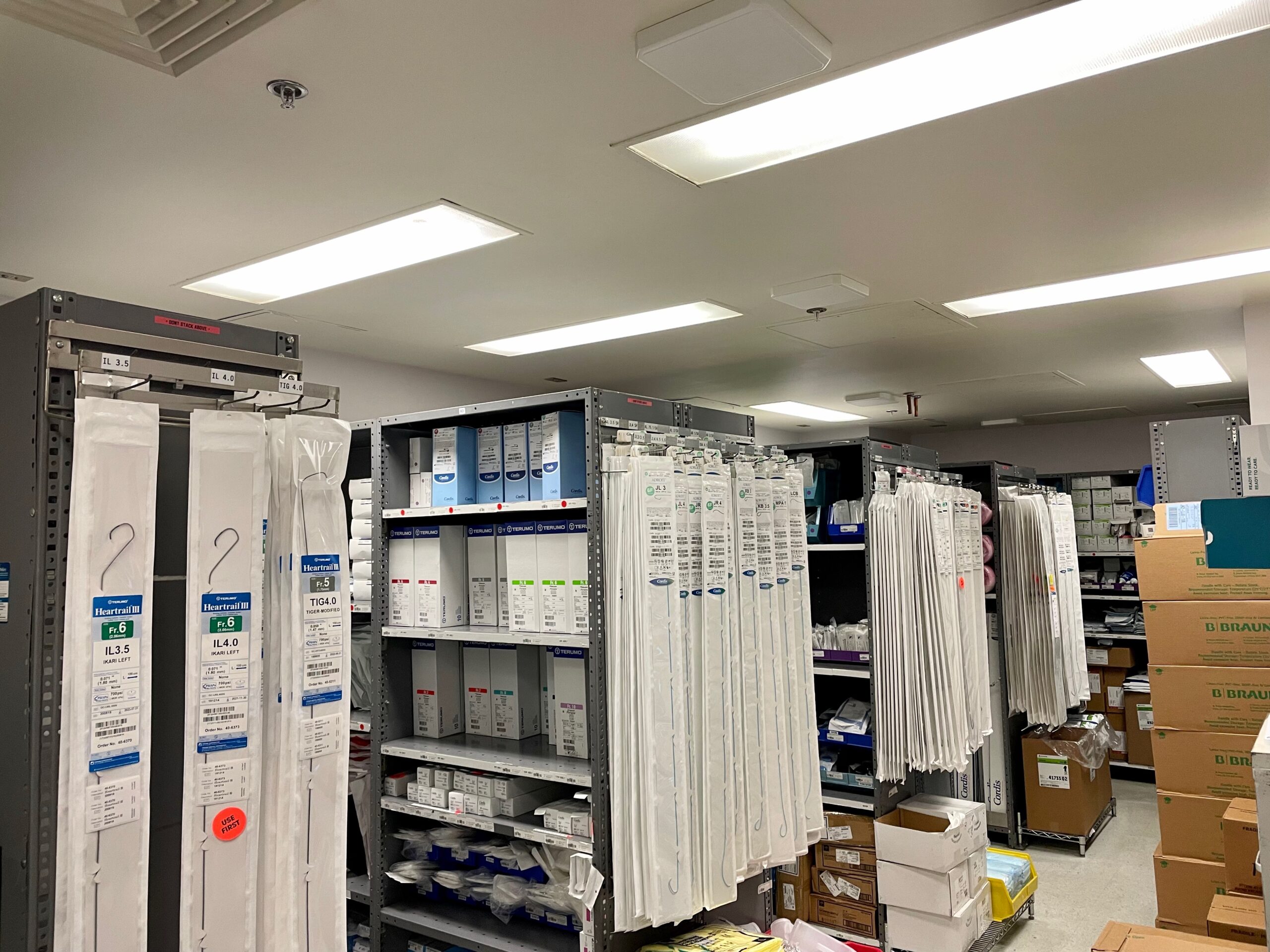Arnold Chazal, Co-Founder and CEO of VUEMED
Dealing with unpredicted stock-outs of needed items or difficulty documenting items? No idea where an item is located or if it’s even available? Unsure which items are about to expire or unable to track a recalled item to an individual patient? Tired of the burden of manual entry for items at the point of care?
If these problems sound familiar, it’s because they are. In fact, they’re extremely common inventory-related pain points at hospitals. There are tens of thousands of medical products needed for hundreds of procedures – for very different patients with unique needs. As a result, there are a tremendous number of medical devices and supplies on the market, many of which are stocked at hospitals to perform these procedures. However, these hospital supplies and items aren’t necessarily being tracked inside the facilities or even to a specific patient, despite limited shelf life and being subject to possible recalls.
Without accurate information about which items are needed for patient care, whether they’re in stock, where they’re located in the hospital, and whether or not they’ve expired or been recalled, there are tremendous inefficiencies and risks to patients. In addition, clinical staff commonly have to use outdated and manual systems, and/or cumbersome processes, to document items used on a patient, which leads to poor compliance and errors in medical records and billing, and distracts them from focusing on the patient. Any breakdown in the supply chain affects patients directly by putting them at risk.
Additionally, the healthcare supply chain continues to be saddled with massive waste due to the failure of hospitals to have an optimized and lean inventory. Supply chain costs are one of the primary expenses for hospitals, and particularly impact institutions with a high Case Mix Index, such as academic medical centers with busy interventional departments. These departments (cath labs, interventional radiology, EP, OR, GI/endoscopy) are areas where the majority of supply expenses occur, and where consumable supplies and implants represent an essential part of the patient care process and cost.
Wouldn’t you like to have data at your fingertips that tells you how many days of on-hand inventory you have, what your burn rate is, how much safety stock you need, which specific supplies you need, and what you can cut from purchasing if you need to redirect dollars elsewhere?
Despite the high costs and patient care impact, most specialty departments don’t have visibility and operational control over their supply spend and levels of waste, and lack accurate utilization data and effective inventory management tools and practices. A clear priority for these departments must be to improve inventory alignment, reduce inventory expenses, and uncover savings opportunities. The COVID-19 pandemic has made it abundantly clear that better supply chain visibility and predictability are needed to manage hospitals’ operations and resources because they enable hospitals to plan, redirect, and scale resources up or down depending on the situation. Smart Key Performance Indicators (KPIs) – such as those tracking expiring or expired inventory, stagnating or unused items, and consumed vs. purchased inventory – provide hospitals with the data visibility needed to guide and achieve inventory optimization and alignment with clinical needs, while also preventing waste and unnecessary spending.
HOW RAIN RFID TECHNOLOGY SOLVES THESE CHALLENGES
RAIN RFID data capture solutions enable hospitals to track medical devices and supplies from the manufacturer all the way to the point of care, and to gain the data needed to feed their KPIs and regain control over their inventory. As explained by the RAIN Alliance, RAIN RFID is a “wireless technology that connects billions of everyday items to the internet, enabling businesses and consumers to identify, locate, authenticate, and engage each item.”[1]
“RAIN” stands for RAdio frequency IdentificatioN. It uses Ultra High Frequency (UHF) passive Gen 2 RFID tags and readers that are compliant with global standards (GS1 EPC) and the FDA’s Unique Device Identification (UDI) regulation. RAIN RFID solutions are able to continuously and automatically track in real time, and with 99.5% accuracy, the movement and location of all tagged supplies, all of which is achieved without the need for human intervention. Data capture is hands-free and cabinet-free. With the use of strategically placed zonal and steerable antennas in the ceiling, RAIN RFID turns any space – whether a supply room, procedure room, or warehouse – into a fully controlled inventory space using existing shelving and storage systems.
RAIN RFID ensures the accurate data capture of every item coming in and going out of the department, as well as used at the point of care. This data is then reported to the Cloud in order to be able to provide real-time visibility and trackability of medical products and supplies throughout the supply chain. The power of the Cloud lies in its ability to store, compute, analyze, and report tremendous amounts of data with easy user access, and to help turn data into actionable information. When ERP and EMR interfaces are then put in place, they provide streamlined processes for clinicians to swiftly capture and document all required products with their UDI data in one single motion and with complete accuracy, thus saving time and avoiding non-value-added tasks. As for the supply chain staff, the Cloud-reporting nature of RAIN RFID and the same interfaces allow them to efficiently manage inventory, reorders, expirations, etc., and administrators are able to monitor the overall utilization, costs, contract compliance, and so on.
10 TRANSFORMATIVE OUTCOMES DRIVEN BY RAIN RFID
By applying RAIN RFID technology together with inventory optimization software, hospitals have the tools to achieve many dramatic outcomes:
- Recalled products traced to patients within seconds
- Expired devices never placed in patients
- Guaranteed availability of required products for procedures
- Accurate and complete patient medical records
- Reduction in unused inventory
- Reduction in purchases and waste
- Reduction in unnecessary product variation
- Inventory aligned with clinical needs
- Automated procure-to-pay processes
- Comprehensive and accurate charge capture and billing
RAIN RFID is an incredibly powerful tool for achieving supply chain transparency and inventory optimization through the collection of essential data. Information truly IS power – the power to analyze and decide, the power to make changes and adapt, the power to succeed and excel.
Arnold Chazal is the CEO and Co-Founder of VUEMED, a global healthcare Information Technology company committed to providing innovative and transformative technologies to healthcare organizations, such as VueTrack-RF, VUEMED’s RAIN RFID technology. He has built VUEMED as a Software-as-a-Service (SaaS) company, the focus of which is to help hospitals and medical product/device manufacturers improve their performance and data accuracy throughout the healthcare supply chain, from manufacturing to point of care. Prior to VUEMED, Arnold was a Founding Partner at the medical market research and consulting firm Kieris Solutions and spent 12 years in the management consulting and business intelligence industry, providing strategic advice, technology implementation, and lean process improvement solutions to Fortune companies, primarily in the healthcare field in the U.S. and Europe. He holds a B.A. from Nanterre University in Paris and a J.D. from the University of Sorbonne Law School, and completed graduate studies at Oxford University and Harvard Law School.
EMAIL: achazal@vuemed.com; TEL: 239-784-8292
VUEMED is based in Seattle, WA www.vuemed.com
Articles you may like:
Where are the Next Major Supply Chain Savings Going to Come from in 2021 and Beyond?
Why Early Prevention is Better Than the Cure with Healthcare Supply Utilization Management
Why Early Prevention is Better Than the Cure with Healthcare Supply Utilization Management





